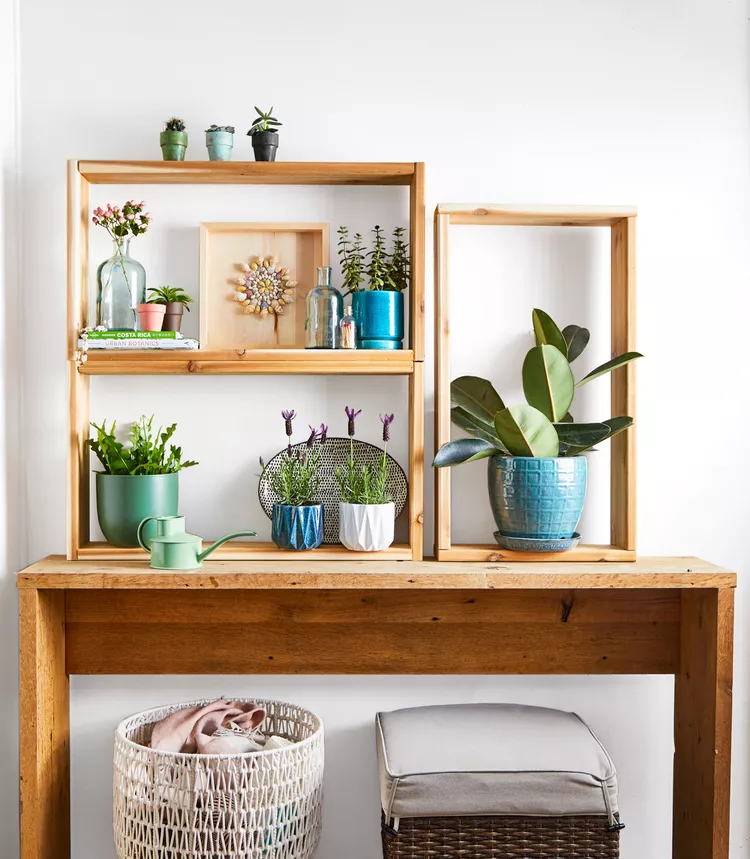Add a Humidifer for Plants, Plus 4 Other Ways to Improve Moisture

If your home has central heating, you may need to add a humidifier for plants because your air will be very dry. The same is true during the summertime if your air conditioner runs a lot. While cacti and succulents thrive in dry conditions, most tropical plants don't. A common way these humidity-loving plants show they need more moisture in the air is browning leaf tips. Climate-controlled spaces demand one of two approaches: Exclusively grow plants that like dryness (or at least tolerate it) or raise the humidity in your home. Here are five ways to boost humidity around your houseplants.
1. Invest in a Humidifier for Plants
A humidifier is the most obvious solution to dry air. But is a humidifier for plants a good idea? Yes—the added moisture benefits most houseplants (and people, too). If you don't want to install a whole-house humidifier, place a vaporizer or small room humidifier for plants near greenery instead. Even if you use a whole-house humidifier, you may also want to pair that with one or more other methods for increasing humidity around your houseplants.
2. Give Your Plant a Friend
Grouping plants also helps because moisture released by one plant can benefit the plants next to it. Remember that plants also need good air circulation to discourage certain diseases. Leaves of individual plants shouldn't touch. This isn't always possible, but you should give each plant some breathing room.
3. Mist the Leaves
Spray your plants frequently with a fine mist of tepid water. Mist the tops and bottoms of leaves in the morning so plants can dry off more quickly, while temperatures are likely warmer during daylight hours. Besides increasing the humidity around your plants, spritzing your greenery also helps deter some insect pests, especially spider mites. However, never mist plants with fuzzy or hairy leaves because they tend to hold onto the water longer, giving diseases more of a foothold.
Test Garden Tip
Misting at night when temps are cooler means water tends to evaporate more slowly, which encourages diseases.
4. Use a Humidity Tray
A humidity tray is less costly than a humidifier for plants and easy to DIY. Place an individual plant or group of plants, such as your prize orchid collection, on a shallow tray filled with a layer of clean pebbles or glass beads. Fill the tray with water until its surface is just below the bottoms of the pots. As the water in the tray evaporates, it will create humidity around your plants. Just be sure the water doesn't touch the pots, or it could keep the soil too wet and cause root rot.
5. Nest Two Pots
You can use a double-potting technique to give your houseplant a more humid environment. Place your plant's pot inside a larger cachepot that doesn't have a drainage hole. Fill the gap between the pots with moist sphagnum moss. Add water as necessary to keep the moss damp. As the moisture evaporates, it will create a pocket of humidity around your plant. Plus, double-potting allows you to show off your plant in a more decorative planter than it may already be in.
How to Pick the Best Houseplants for Your Space
Houseplants don't take a lot of work to keep healthy, but choosing the best types for your space and your lifestyle is a good start to being successful at growing them and helping them to thrive. You can find houseplants at a local nursery or big box store or shop online and have them delivered to your door. If you don't get a lot of sunlight where you'd like to add greenery, pick plants that do well in low-light locations. These sage green plants will bring calming hues to your home. For a boho look, hanging plants in macrame holders are eye-catching additions that will fit right in and make the best use of your home's vertical spaces.
You should avoid toxic plants in homes with pets and small children.